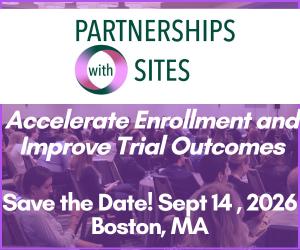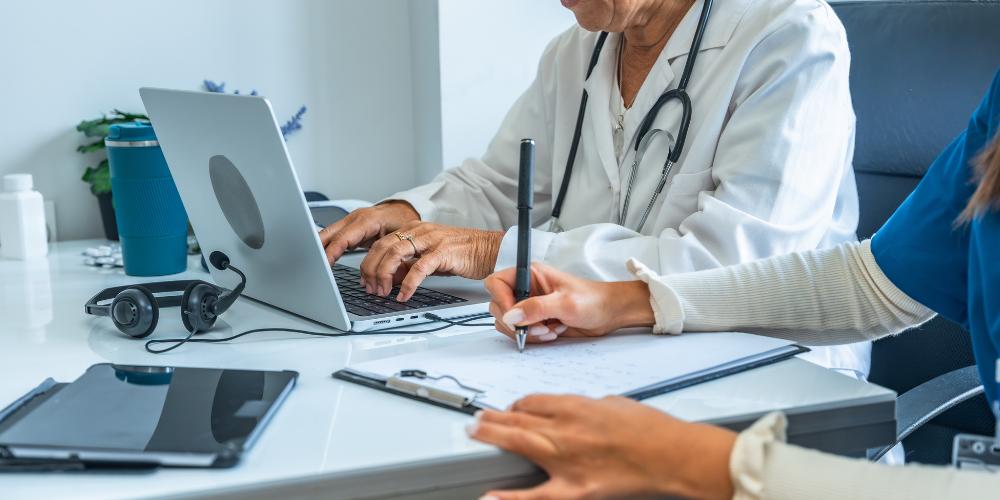An App that Remotely Monitors Immunotherapy Patients and Informs Clinical Research, at MD Anderson Cancer Center
To catch unexpected side effects of immuno-oncology sooner, MD Anderson Cancer Center developed an app that monitored patients remotely without adding undue burden to the clinical care team.

Why did you develop a remote monitoring app for your immunotherapy patients?
With classic chemotherapy drugs, you know that you're going to give the chemotherapy and a day or two later, you're going to have side effects. With immunotherapy, the side effects can happen at any point in time, even weeks or months afterwards. Therefore, with immunotherapy, you have to have constant communication with patients so that you can catch these unexpected side effects early. It is not only the clinical care component; there's also the research and expanding knowledge component. Immunotherapy is still relatively new to oncology and the patterns of the toxicities are still being defined. Our platform is now helping us to define the patterns of these toxicities from immunotherapies.
Is this being used in the context of both clinical trials and in clinical care?
We started with novel immunotherapies in clinical trials. One advantage with initially focusing on patients in clinical trials is that clinical trials have a much more structured schedule, and timetables. That way, we can start building and seeing if there are any inefficiencies in how we apply that platform with a goal to then deploy it to everybody else. When we determined that everything was progressing smoothly, we expanded to every patient on immunotherapy, whether they're on trial or not. As long as they're on immunotherapy in our genitourinary oncology department, they can enroll in this program.
This started expanding more and more, around the time of the COVID pandemic. Around the 90-100 patient mark, we expanded to not only include the main MD Anderson campus, but also the other MD Anderson-affiliated locations around the Houston area with patients that are being treated in those locations with immunotherapy and have GU malignancies. Now, more than 170 patients have enrolled in this platform. The goal is to get to 1000.
"We did not want to increase the burden to our care team staffing. We wanted to make sure that there was no need for any increase in care team staffing and there wasn’t."
In the early days, what were you primarily concerned about?
Feasibility. We published an interim feasibility analysis paper in JAMA Network after we enrolled the first 50 patients to ensure that things were moving in the right direction. Initially the first 10 patients were ones in clinical trials, enrolled in September 2019, but as we expanded the number to 50, we wanted to make sure that feasibility was achievable in any patient treated with immunotherapy in our department, whether on clinical trials or not.
One key metric of feasibility was whether the patient and the care teams adhered to using the platform. If you give them an app, and they never use it, what's the point? Another key metric that we have specified for that analysis was that we did not want to increase the burden to our care team staffing. We wanted to make sure that there was no need for any increase in care team staffing and there wasn’t. In order to reduce unnecessary alerts that would increase the burden, our system adaptively changes the thresholds of the alerts.
What does the remote monitoring look like from the patient side?
The patients are asked three times a week – and they can do it even more frequently if they want to – to put in their symptoms. They report this on their own on an app in their smartphone. If the symptom report crosses a certain threshold, then the patient gets a message that lets them know that this symptom is concerning and that they should call their clinic team, and they receive information on how to call. Concurrently, the clinic team also gets that information. It goes both ways, and that ensures that this does not get missed.
"When you’re at home, even when you have cancer, you want to live your life. You don't want to have a system that reminds you every day or every two days that you have cancer."
How was it decided what alerts merited a response?
Initially, we had clinical content experts who advised on what the thresholds should be. But we found, in practice, that we needed to change those thresholds and keep adapting them to have the highest positive predictive value. To do that, we connected these symptom alerts with actual events, such as whether or not the patient actually had an adverse event.
We found, for example in the interim analysis, that some symptoms that had the highest positive predictive value were dizziness, nausea and shortness of breath. The ones that resulted in a lot of unnecessary alerts were joint pains, muscle pains, fatigue and cough. So for those, we actually had to change to a stricter alert threshold. And as soon as we did that, the unnecessary alerts were reduced.
How are patients onboarded?
The first thing that happens is obtaining informed consent. We have to explain that the system is very secure and that our patients’ data is secure. As part of the research component of the platform, we do obtain samples from patients that are going to be used for research and for connecting the patient reports with biological specimen results and analysis. The patients are instructed on how to install the app.
We haven’t heard many complaints about not being able to use it. In the JAMA Network Open paper, we broke down our patients into age demographics and found that even patients who were older were embracing the app effectively. Once the app is set up, all they have to do is use it three times a week, or more frequently if they would like.
How do you remind patients to input their information?
That was a key component, because we didn’t want to overburden them. When you’re at home, even when you have cancer, you want to live your life. You don't want to have a system that reminds you every day or every two days that you have cancer. We do send reminders on occasion, but we try to minimize those. And especially later on, once somebody has become acquainted with the process and the system, they know if they need to be on top of reporting symptoms or not. And that is okay. As long as they know how to use the app when the time comes, that’s okay.
"Creating an ecosystem in which remote monitoring informed both clinical practice and clinical trials was a primary goal of this platform from the beginning."
Was there ever the thought of centralizing the response for adverse reactions, to avoid overburdening individual clinicians?
Creating an ecosystem in which remote monitoring informed both clinical practice and clinical trials was a primary goal of this platform from the beginning. The goal was always for this to be a bidirectional interaction between the specific clinical team and their patients. Because of that, we did not want the symptoms to be addressed by a centralized team.
At the same time, of course, all of these data elements that we collect are centrally located safely and securely, and are being used to inform research. A big component of this platform is discovery. We're interested in connecting those symptom reports with other objective data, such as tissue samples, blood samples, lab results, etc. Our department has a lab-based process that coordinates the acquisition and the annotation of clinical specimens for this platform.
What were the metrics for success?
There were three main things to measure. The first is whether we are engaging and empowering our patients. That is measured objectively through metrics like adherence. The fact that we're getting a consistent adherence rate of more than 70% is an indicator.
The second is to address clinical care team needs, goals and metrics. For example, a surrogate for clinical outcomes would be a reduction in emergency visits, or reduction in visits, severity of side effects and number of hospitalizations. Are we increasing the time that the patients remain on immunotherapy? If you mitigate the side effects early enough, you may allow the patients to stay longer on therapy; is this increased time on therapy improving outcomes?
The third is to monitor our performance as a department and optimize our infrastructure, based on these centralized metrics to achieve our overarching goals of timely and efficient patient care.
Can you give an example of what you mean by optimizing operations?
Let’s say that we are finding out patients have been reporting symptoms suggestive of diarrhea. Everything went well with the platform: the patient was notified to contact the team and the team was notified as well. The communication happens with the patient being called, etc.
And yet, despite all of that, there was some kind of block in the process that delayed the timely diagnostic intervention. Let’s say you needed to have your stool samples checked for this particular potential side effect, and it didn’t happen because of X, Y and Z. Or you needed to have a colonoscopy for this, and it only happened months later. By having that information and those dates, we can see that a clinically important diagnostic process was delayed and begin asking why that happened and how we can do better the next time. We can thus do quality improvement to change infrastructure to ensure overall efficiency.
What is your goal as you expand to your goal of 1000 patients?
Our goal is to determine if there are differences across sites. We’ve already expanded from the main MD Anderson hub to other sites, and this knowledge helps us get to our ultimate goal, which is deploying to the community. Particularly in remote areas, having the ability to efficiently remote monitor with well-defined threshold alerts will be very helpful. Especially for patients that are enrolled in trials of new therapies, it makes them feel more comfortable when they've got this communication system that can help anticipate or prevent side effects.
At the same time, the goal is to adapt this platform to other cancer types with their specific requirements. We started with genitourinary malignancies like kidney, bladder and prostate cancer, because that's our department's expertise and a lot of these patients receive immunotherapy. But we would like to expand our findings to, for example, lung cancer or melanoma. The ultimate goal is to efficiently integrate all of the data generated by the platform and facilitate the comprehensive characterization of patient care.








